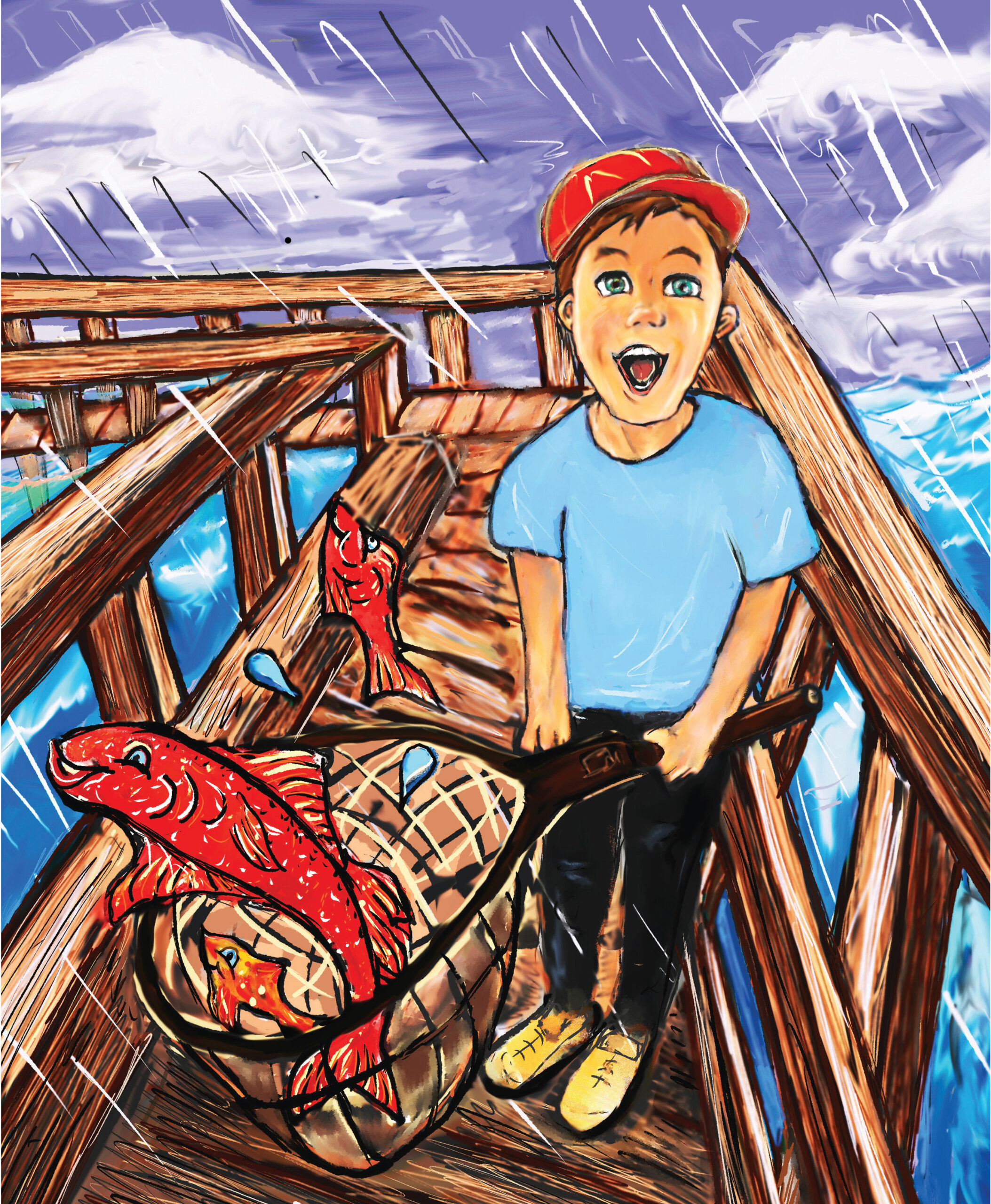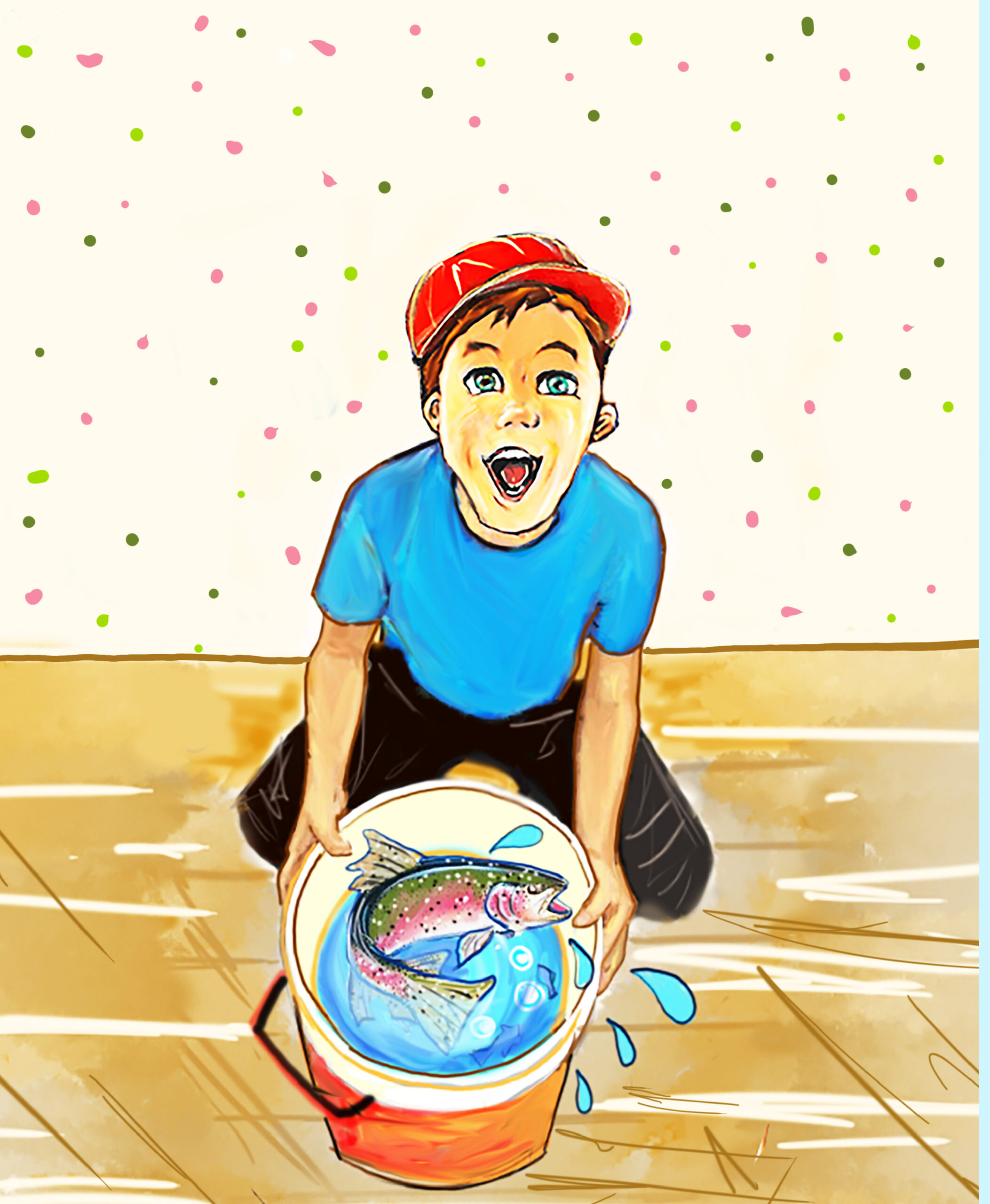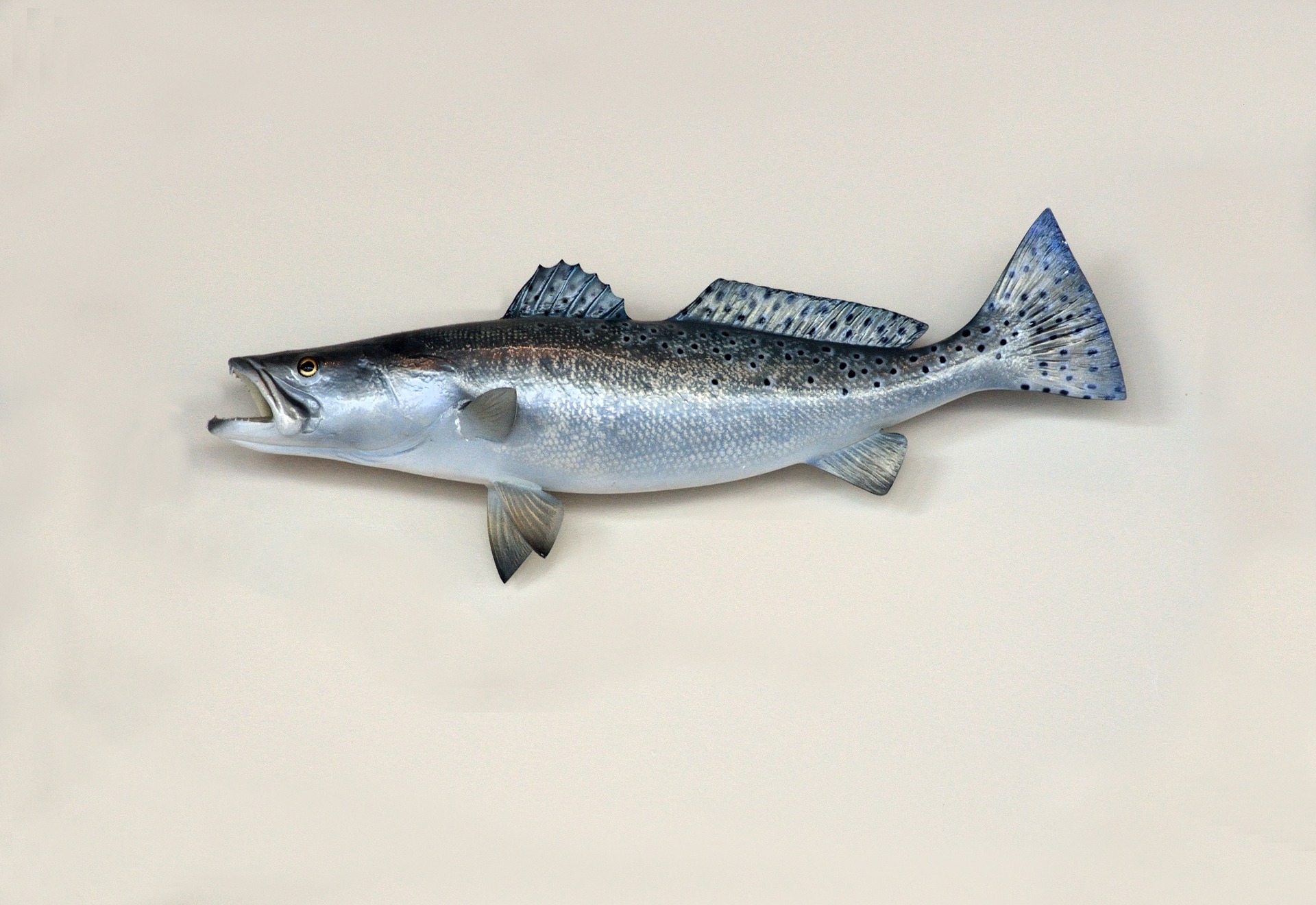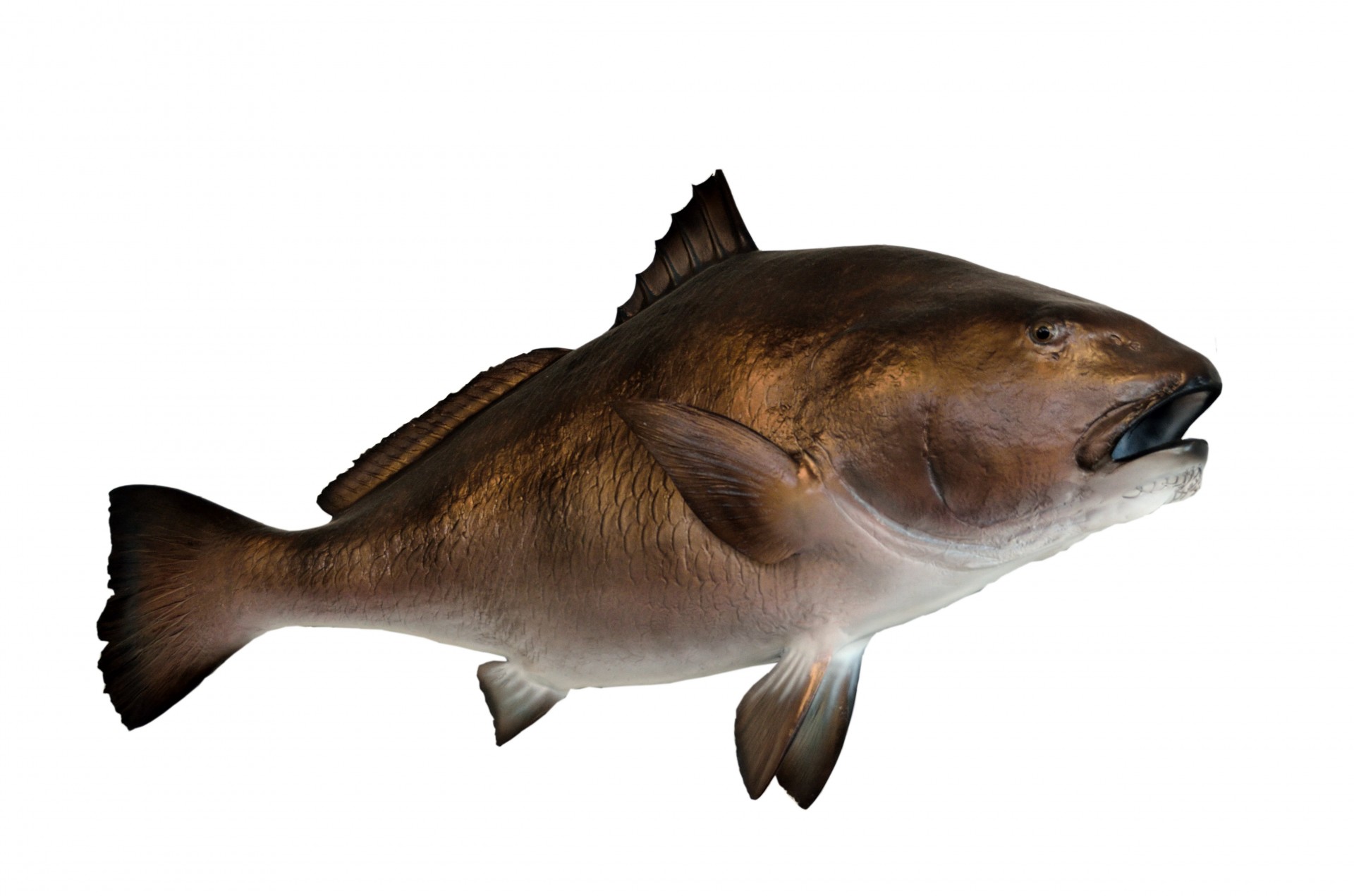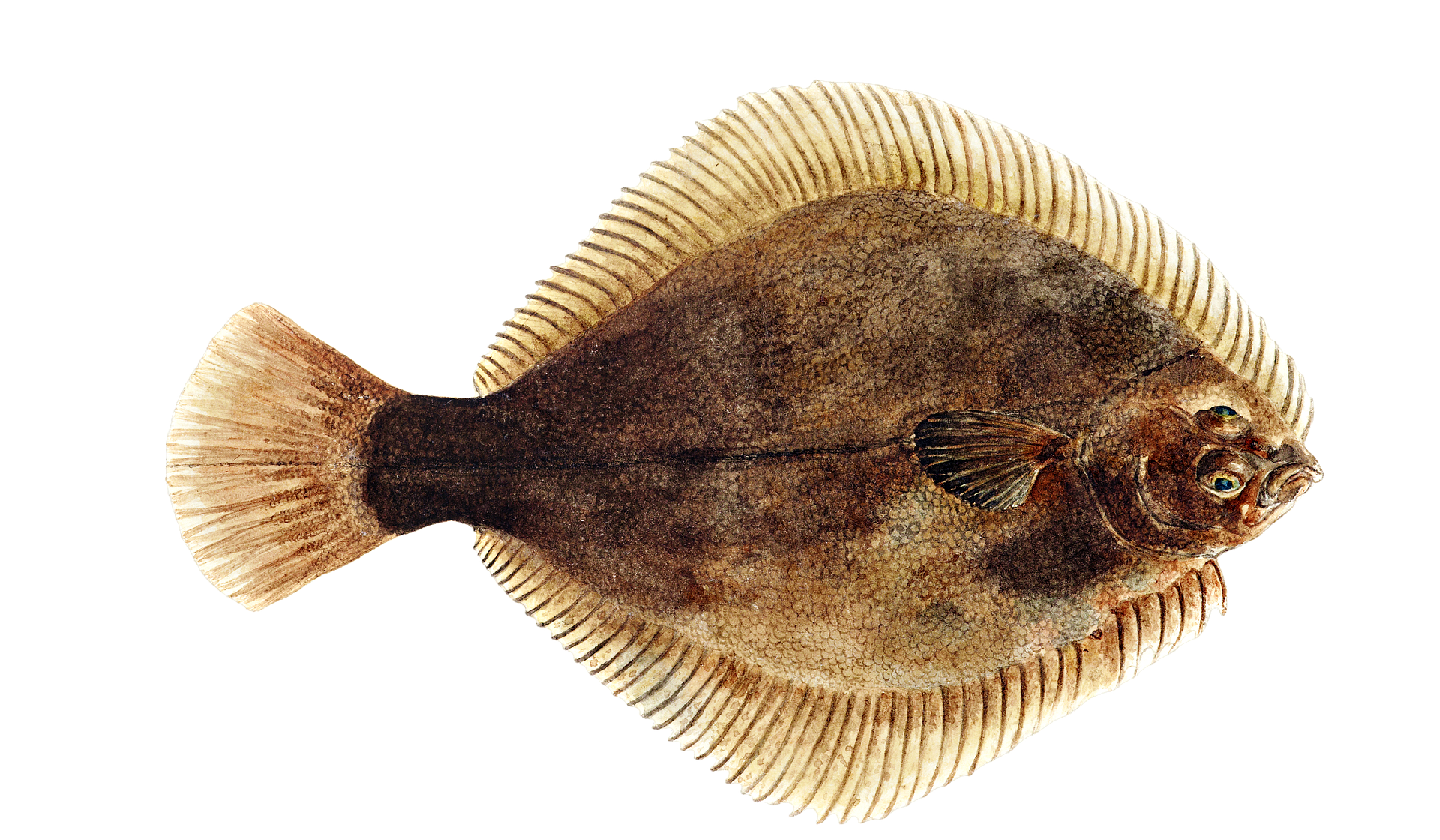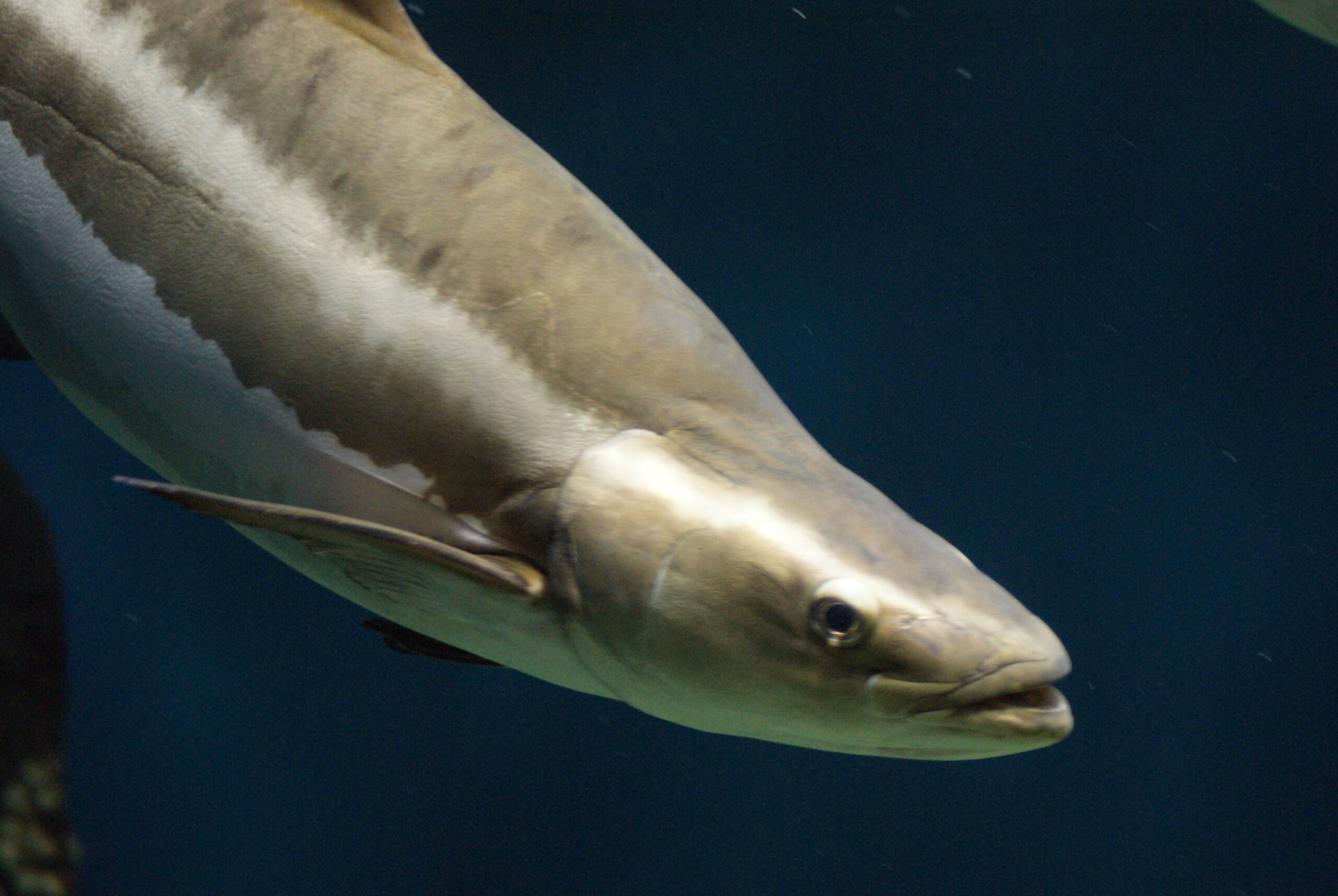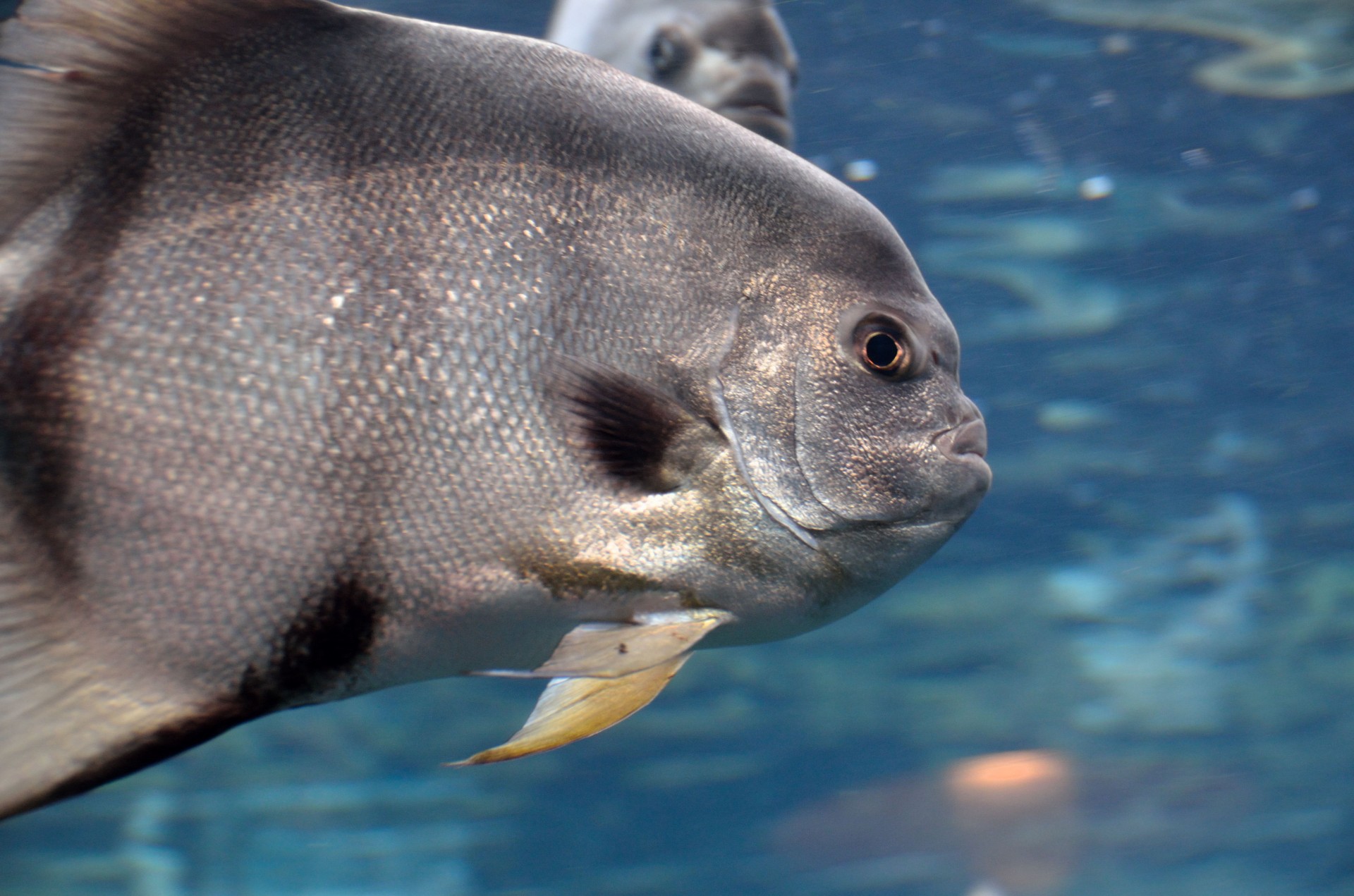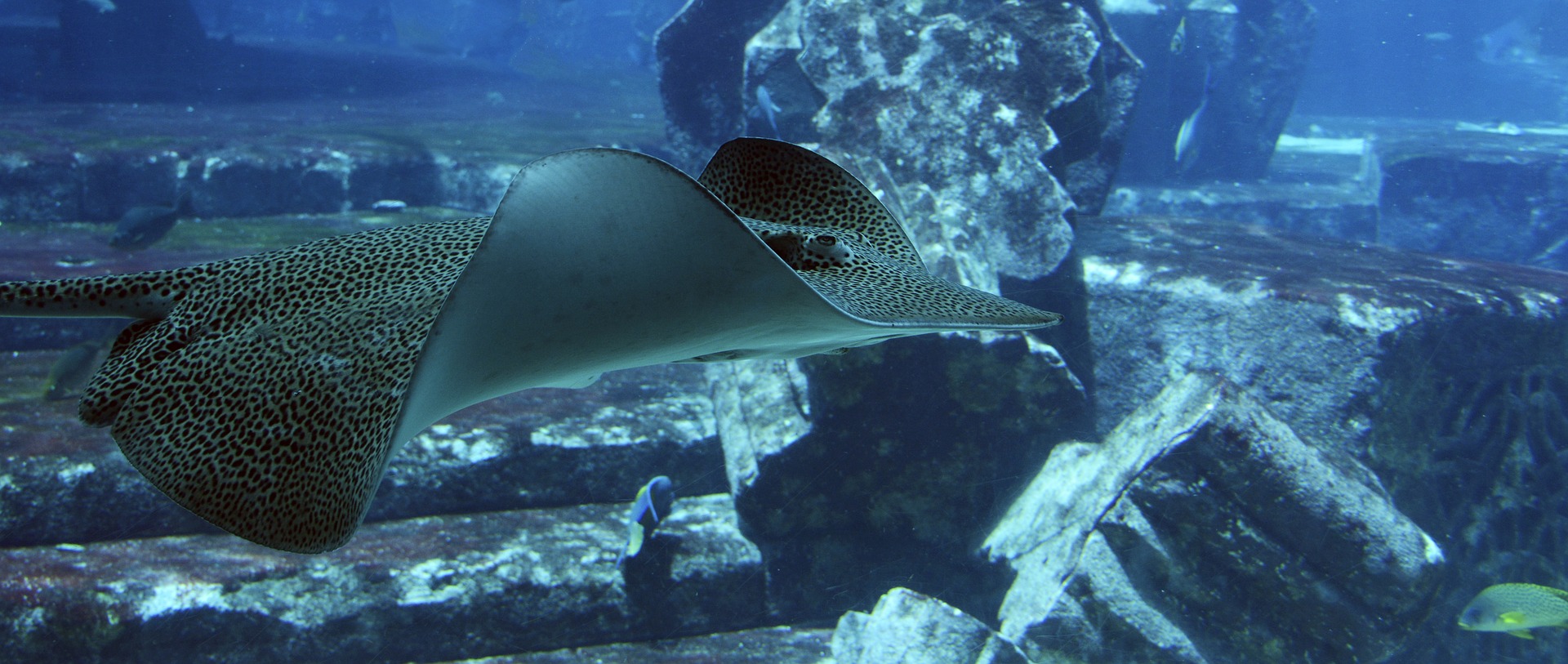Saltwater Fish
Coastal waters are home to a large variety of fish. From tidal inlets and creeks to the Atlantic ocean there are countless different species to be found! In just one day of fishing Jake and Daddy Jim caught 13 fish!
Red Drum
Sciaenops ocellatus
- Identification Information: Bronze or red in color with one or more dark spots near its tail fin. Can reach 4-5 feet in length. They can reach lengths of 60 inches and weigh almost 100 pounds.
- Lifespan: Exceed 40 years.
- Diet: Crabs, shrimp, fish, and marine invertebrates.
- Fun Fact: The spot on their caudal fin, tail fin, is used to distract predators. Also known as Spottail, Redfish, or Channel Bass.
Spotted Sea Trout
Cynoscion nebulosus
- Identification Information: Dark gray on top and white on the bottom with black spots along the body. Two large teeth on the tip of the upper jaw.
- Lifespan: Up to 12 years.
- Diet: Fish, shrimp, and other crustaceans.
- Fun Fact: The sea trout is part of the drum family. All drums can make a loud drumming or croaking sound by vibrating their swim bladder using special muscles
Black Drum
Pogonias cromis
- Identification Information: Silver to dark gray with black tinted fins. Lower jaw with barbels extending down. Large scales. Averages 14 inches in length but can reach 67 inches and 109 pounds.
- Lifespan: Up to 60 years.
- Diet: Mostly bottom feeders, eating mollusks and crabs.
- Fun Fact: Black Drum use their barbels to sense for food hidden along the bottom.
Sheepshead
Archosargus probatocephalus
- Identification Information: Gray with dark bars alongside the body. Can reach 30 inches in length.
- Lifespan: Around 20 years.
- Diet: Feed on blue crabs, oysters, clams, crustaceans, and small fish.
- Fun Fact: Their mouth has several rows of stubby teeth which help the fish scrape prey, like barnacles, off structures and crush the shells.
Southern Flounder
Paralichthys lethostigma
- Identification Information: Flat body with both eyes on the same side. Color varies with their habitat. They are covered in spots and blotches. Average 15 inches in length.
- Lifespan: Around 7 to 8 years.
- Diet: Ambush prey from the bottom where they lie camouflaged under a thin layer of mud or sand. They feed on blue crabs, shrimp, and other fish.
- Fun Fact: Can change their color pattern to mimic the substrate on which they lie. These fish are free-swimming as young and as they grow to adults one eye begins to migrate to the other side of the head and they become flat.
Cobia
Rachycentron canadum
- Identification Information: Elongated, torpedo-shaped bodies with long depressed heads. The lower jaw projects past the upper jaw. They are darker in color with lateral stripes from the eye to the tail. They can grow 6 feet and more than 100 pounds.
- Lifespan: Up to 12 years.
- Diet: Feed primarily on blue crabs but also eat fish and shrimp.
- Fun Fact: The Port Royal Sound Area is one of the only places where adult cobia are regularly found in inshore waters. About 80-85% of Cobia caught in SC are done so in Beaufort County.
Atlantic Spadefish
Chaetodipterus faber
- Identification Information: Silver-gray to yellowish with a disc shaped body. They have 4-6 black bars on the side and have a small mouth. They can be 12-18 inches in length.
- Lifespan: Up to 8-10 years.
- Diet: Feed on bottom dwelling crustaceans, mollusks, algae, and jellyfish.
- Fun Fact: Spadefish are often found around wrecks, artificial reefs, and piers. They swim in schools of up to 500 spadefish!
Southern Stingray
Dasyatis americana
- Identification Information: Flat with diamond-shaped bodies. They are gray to dark brown in color with pale bellies. They can reach 4 feet across. The tail can be twice as long as the body.
- Lifespan: Around 15 years.
- Diet: Feed on shellfish, worms, shrimp, crabs, and small fish.
- Fun Fact: Like sharks and skates, they have a skeleton composed of only cartilage, not bone. The venomous barb of a stingray is located on the base of its tail and is used to defend against predators.
Resources
All information found on this page was sourced from the following organizations listed below. Please click the buttons to the left for more info.
- South Carolina Department of Natural Resources (DNR)
- Chesapeake Bay Program
- North Carolina Department of Environmental Quality (DEQ)
Special Shoutout to Jessica Kochman from the Port Royal Sound Foundation! Be sure to check out their website to learn more about their awesome events and activities!

